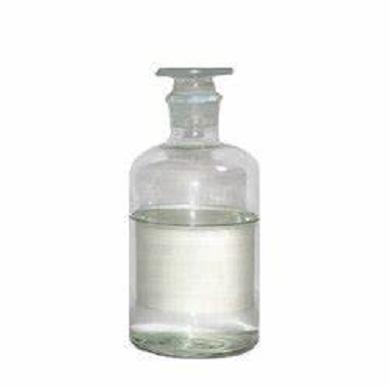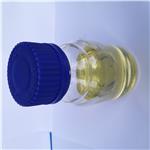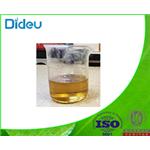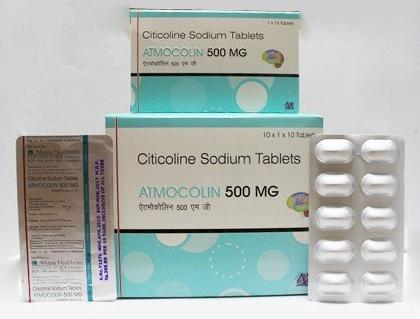What is Petroleum ether ?
Sep 28,2021
Background
Organic solvents and solvent mixtures became widely used as a result of the coal tar industry in the late 1800s, and increased markedly in their variety during the century that followed. Both petroleum ether (CAS 8030-30-6) and ligroin (CAS 8032-32-4) refer to complex mixtures of petroleum distillates with overlapping characteristics. Ligroin was defined before 1950 by American Society for Testing and Materials as synonymous with petroleum ether. Currently petroleum ether, or naphtha, refers to a mixture of hydrocarbons predominantly in the C5– C6 range with a typical boiling range between 38 and 93 C, while ligroin refers to a mixture of hydrocarbons primarily in the C7–C11 range with a typical boiling range between 60 and 120 C. However, many of the common solvent synonyms are used interchangeably between petroleum ether and ligroin, and in some cases, the terms petroleum ether and ligroin are still used synonymously. Investigations of past toxicity studies on petroleum distillate solvents must take into account the fact that many solvent mixtures have been reformulated since the late 1970s to contain lower benzene and n-hexane content.

Properties
Petroleum ether is a colorless transparent liquid, slightly odor, low polarity. Petroleum ether is a mixture of various small molecule ethers after petroleum cracking. According to the boiling point, it can be divided into 30-60℃ and 60-90℃.
It is insoluble in water and can be miscible with acetone, ether, ethyl acetate, benzene, chloroform and higher alcohols above methanol. It can dissolve synthetic resins such as coumarone resin and triglyceride rosinate. Partially dissolves rosin, pitch, frankincense and aromatic resins. Does not dissolve shellac and alkaloids. Except for castor oil, most liquid fats are soluble, and solid fats are slightly soluble. The fatty acid is soluble, but the hydroxy acid is hard to dissolve, so petroleum ether can be used to separate the hydroxy acid mixed in the fatty acid. Raw rubber and vulcanized rubber swell significantly in petroleum ether. Chlorinated rubber, nitrocellulose, cellulose acetate, benzyl cellulose, etc. are insoluble in petroleum ether.
Synthesis
Industrial petroleum ether contains impurities such as unsaturated hydrocarbons, aromatic hydrocarbons, sulfides, acidic substances and non-volatile substances. When refining, it is washed with concentrated sulfuric acid (98%~99%) until the color disappears, and then washed with alkali and water in sequence. The dehydrating agent is dried and then rectified. After washing with concentrated sulfuric acid, the petroleum ether can be washed with a saturated solution of potassium permanganate dissolved in 10% sulfuric acid until the purple color in the water layer no longer disappears. Then it is washed with water, the dehydrating agent is dried and distilled. Anhydrous sodium sulfate, phosphorus pentoxide, sodium metal and calcium chloride are used as dehydrating agents.
Using mineral spirits as raw material, wash with concentrated sulfuric acid, 20% sulfuric acid solution containing 0.1 mol/L potassium permanganate, 10% to 15% alkali solution and distilled water to remove the aromatic hydrocarbon compounds and olefins respectively. Compound, free acid brought in by pickling and free alkali brought in by alkali. Then carry out rectification, remove a small amount of head liquid, collect the distillate according to the required boiling range, and obtain the petroleum ether product.
Uses
Petroleum solvents are typically grouped into three classes based on volatility and aromatic content. They are special boiling range solvents, white spirits, and high boiling aromatics. Petroleum ether is in the special boiling range solvent class. It is used in the rubber industry and as a degreasing agent. Petroleum ether is a common constituent in adhesives, inks, paints, varnishes, and lacquers.
Exposure Routes and Pathways
Exposure occurs most commonly by either inhalation or through skin contact.
Toxic kinetics
Petroleum ether is absorbed by the lungs following inhalation exposure. It is metabolized by the liver with a biological half-life of 46–48 h.
Mechanism of Toxicity
The acute toxicity from overexposure to petroleum ether is manifested primarily in central nervous system (CNS) effects.
The mechanism of toxicity is unknown; however, the general anoxia observed is most likely due to oxygen deprivation.
The mechanism of toxicity from long-term overexposure to petroleum ether is dependent on the chemical makeup of the distillate. For example, if peripheral neuropathy is observed, it is most likely due to a high concentration of n-hexane in the petroleum ether. n-Hexane is known to cause axonal damage in peripheral nerves.
Acute and Short-Term Toxicity (or Exposure)
Animal
In general, the toxicity reported from exposure to petroleum ether is more pronounced with samples containing higher concentrations of aromatic compounds. The irritation potential of petroleum ether to skin and eyes as tested in rabbits in the Draize protocol ranged from minimally to moderately irritating. Inhalation toxicity of VM&P naphtha was studied in mice, rats, cats, and dogs at concentrations ranging from 280 to 15 000 ppm. Acute exposure to high concentrations resulted in loss of motor coordination and CNS depression. Eye irritation was reported in rats at 3400 ppm after 4 h and dogs at 3400 ppm after 2 h. Respiration rate was decreased in mice after exposure for 1 min to X2600 ppm. The 4 h LC50 in rats was reported to be 3400 ppm.
Human
Skin contact with petroleum solvents can cause allergic contact dermatitis. Preexisting skin disease may increase the potential for adverse effects. Overexposure via inhalation of petroleum ether affects primarily the CNS. Short-term, high overexposure is associated with an excitatory phase followed by a depressive phase. Exposures of 100–400 ppm for 7 h have resulted in headaches, fatigue, and in coordination with dose-associated effects on equilibrium, reaction time, vasomotor coordination, and memory. Inhalation exposures of 445–1250 ppm resulted in blurred vision, a cold sensation in extremities, fatigability, headache, fatty demyelination of muscle fibers, and demyelination and mild axonal degeneration. Exposure to 880 ppm produced eye and throat irritation with temporary olfactory fatigue.
In Vitro Toxicity Data
The majority of data suggest that petroleum ether is not mutagenic, based on in vitro tests using cultured mammalian cells, yeast, or bacterial test systems. Genotoxic potential is correlated with polynuclear aromatic hydrocarbon concentration.
Clinical Management
Overexposure to vapors of petroleum ether is treated by removing the patient to fresh air. If skin or eye contact occurs, the affected areas should be flushed with water for at least 15 min to remove residual solvent. Good personal hygiene and regular washing of skin and clothes minimizes the potential for developing allergic contact dermatitis. If ingestion of petroleum ether occurs, vomiting should not be induced. This could result in aspiration of solvent into the lungs, leading to chemical pneumonitis, and pulmonary edema, which can be fatal. If ingestion is suspected and the patient is coughing, there is a good possibility that aspiration has occurred. The patient should be monitored closely; hospitalization may be indicated.
Environmental Fate
Petroleum ether degrades rapidly in soil and water. In air, it reacts with photo chemically produced hydroxyl radicals with an estimated half-life of 4–8 days. Based on water solubility and estimated bio concentration factors, petroleum ether is not expected to bio concentrate in aquatic organisms.
- Related articles
- Related Qustion
Citicoline Sodium is generally used to treat various central nervous system diseases caused by accidents of brain injury and the appearance of cardiovascular and cerebrovascular diseases.....
Sep 27,2021APIMupirocin, also known as pseudomonas acid A, is an ideal skin surface antibacterial preparation. It was marketed by GlaxoSmithKline under the trade name of "Bactroban" in 1985 .....
Sep 28,2021APIPETROLEUM ETHER
64742-89-8You may like
- PETROLEUM ETHER
-

- 2025-12-04
- CAS:64742-89-8
- Min. Order:
- Purity: 0.99
- Supply Ability:
- PETROLEUM ETHER
-

- $10.00 / 1KG
- 2025-12-03
- CAS:64742-89-8
- Min. Order: 1KG
- Purity: 99%
- Supply Ability: 10 mt
- PETROLEUM ETHER
-

- $1.10 / 1g
- 2025-11-18
- CAS:64742-89-8
- Min. Order: 1g
- Purity: 99.00%
- Supply Ability: 100 Tons Min






